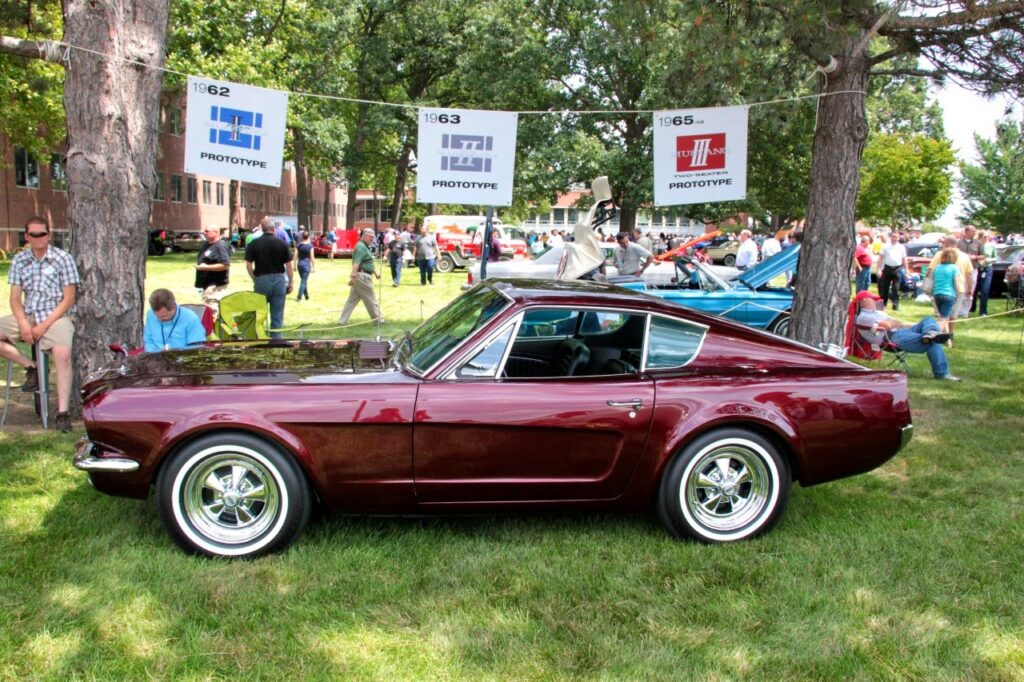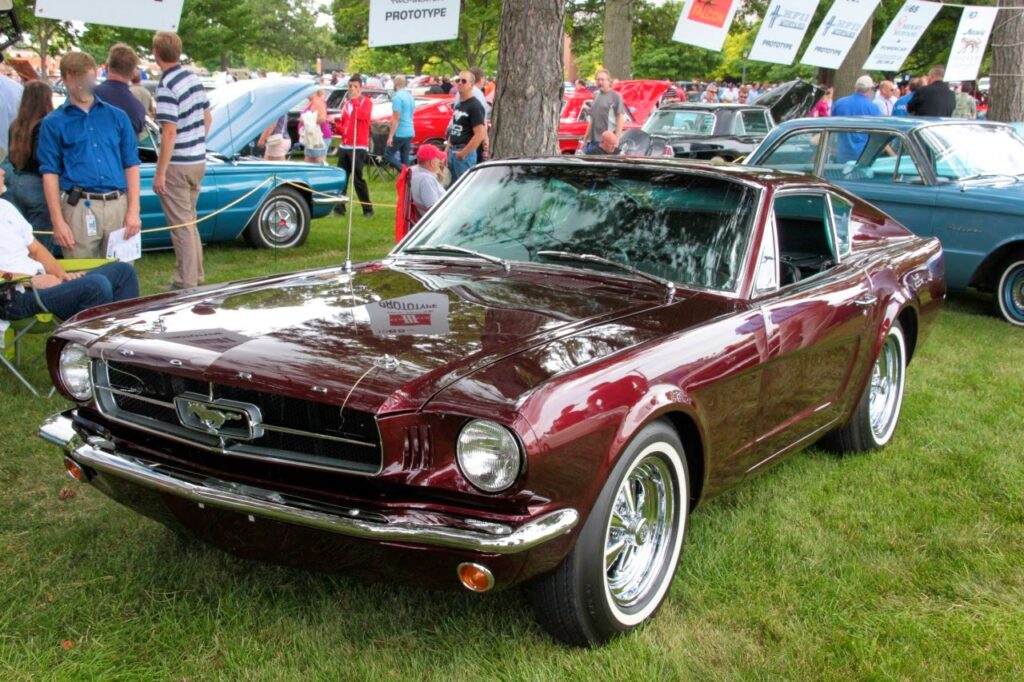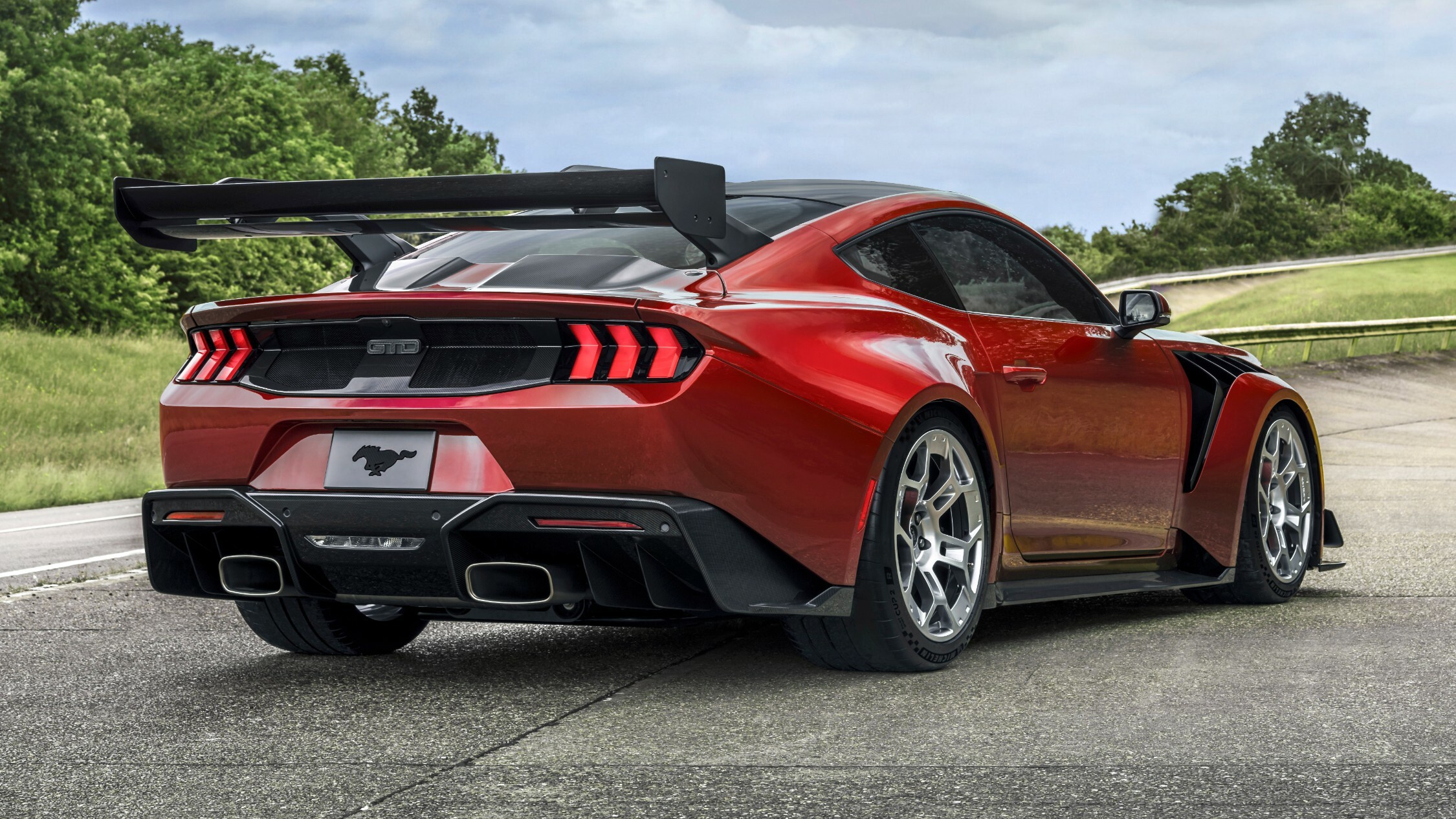When was the first Mustang made? The first Ford Mustang was officially produced on March 9, 1964, with its public debut on April 17, 1964, at the New York World’s Fair. This iconic car quickly became a symbol of American performance and style, capturing the attention of car enthusiasts worldwide.
The Ford Mustang is one of the most iconic cars in the world, known for its performance, style, and cultural significance. It’s a name synonymous with American muscle, but how did this legendary car come to life? When was the first Mustang made? This question takes us back to the early 1960s, a time of innovation and transformation in the automotive industry.
In this article, we will explore the history, development, and release of the first Ford Mustang, uncovering the key moments that led to its creation and examining the car’s impact on the industry and pop culture.

Contents
The Vision Behind the Mustang: Concept and Design
Before the Mustang became the household name it is today, the vision for such a car was born out of necessity and market demand. In the early 1960s, Ford recognized that there was a growing interest among younger buyers for sporty yet affordable cars.
The American car market was flooded with large, family-oriented vehicles, but a new demographic—youthful drivers—was looking for something different. Ford decided to address this demand with a car that would combine stylish design, powerful performance, and affordability.
The Ford Mustang I Concept Car
The origins of the Mustang trace back to 1962 when Ford introduced the Mustang I concept car. This car was a two-seater with a mid-mounted engine and a sleek, aerodynamic design. Although the Mustang I was never put into production, it played a crucial role in shaping the Mustang’s final form. The concept car’s distinctive design, which included a long hood, short rear deck, and sporty appearance, became central to the design elements of the production model.
Despite its role in the Mustang’s evolution, the Mustang I was not a practical model for mass production. The car had performance features aimed at the racing community but lacked the everyday practicality that a larger market desired. Nonetheless, the Mustang I piqued the interest of both Ford executives and car enthusiasts, giving birth to the notion that Ford could create a larger, four-seat sports car for the public.
The Mustang II Concept Car: Stepping Toward the Final Design
In 1963, Ford introduced the Mustang II concept car, a key moment in the development of the Mustang. Unlike the two-seater Mustang I, the Mustang II was designed as a four-seater, making it more practical for everyday consumers. The Mustang II featured many of the same styling cues that would later appear on the production version, including the long hood, aggressive grille, and overall sleek design. The Mustang II concept car also had a rear-wheel-drive setup and was designed to be both affordable and exciting to drive.
Ford used the Mustang II to gauge the market’s reception to the idea of a sporty yet affordable car. It was clear that the combination of style and performance could appeal to a wide audience, including younger drivers, women, and families looking for a second car. The Mustang II showed Ford that the car could indeed be a reality, leading to the decision to move forward with production.
The Birth of the First Production Mustang
With the concept models in place, Ford was ready to build the first production Mustang. Under the leadership of Lee Iacocca, the company set out to design and produce a car that would capture the attention of American consumers. The Mustang was to be both affordable and high-performing, a vehicle that would stand out in a market dominated by conservative designs.
The Design Process
The design team at Ford, led by Joe Oros, Gale Halderman, and L. David Ash, worked tirelessly to create the Mustang’s final design. The goal was to create a car that was both sporty and practical, with a wide appeal across various age groups. The designers drew inspiration from the earlier concept cars, incorporating elements like the long hood and short rear deck. However, they also ensured the Mustang would have room for four passengers and enough space for luggage, which would make it practical for daily driving.
The Engineering Behind the Mustang
To achieve the Mustang’s performance, Ford used components from the Ford Falcon, which was a smaller and more affordable model. By using Falcon components, Ford was able to save money on production costs and keep the price of the Mustang affordable. The Mustang was offered with various engine options, from a modest inline-six engine to more powerful V8 engines, making it versatile enough for a wide range of buyers.
The Mustang was also built on a “unitary” body, meaning that the body and frame were integrated into one piece. This allowed the Mustang to have a more rigid structure, which improved both handling and safety. Additionally, the car’s suspension was designed to provide a smooth ride, which further added to its appeal.

The Official Debut of the First Mustang
On April 17, 1964, the world was introduced to the first production Ford Mustang at the New York World’s Fair. The unveiling was a monumental event, with crowds gathering at the Wonder Rotunda to witness the reveal of what would become one of the most iconic cars in automotive history. The Mustang’s debut was the result of over a year of planning, engineering, and design, and it was met with tremendous excitement.
The Mustang’s Immediate Success
On the very first day of its release, over 22,000 Mustangs were sold, far surpassing Ford’s expectations. By the end of its first year, Ford had sold over 418,000 units, a remarkable feat for a new car model. The Mustang had captured the imagination of American drivers, and it was clear that the car had tapped into a deep-seated desire for a stylish, affordable, and high-performing vehicle.
The Mustang’s success was largely driven by its youthful appeal, sporty design, and versatility. Unlike many of the larger, more expensive cars on the market, the Mustang offered performance and style at a price that was accessible to young buyers and families. It quickly became a symbol of freedom and rebellion, resonating with the cultural movements of the 1960s.
The Mustang’s Legacy: A Cultural Icon
The Ford Mustang didn’t just change the automotive market; it became a cultural icon. Its design and performance inspired generations of drivers, and it quickly became a symbol of American youth and independence. The Mustang was featured in countless films, TV shows, and advertisements, solidifying its place in pop culture.
The car’s success also paved the way for a new genre of vehicles known as pony cars. These cars, characterized by their performance, style, and affordability, were inspired by the Mustang and led to the development of models like the Chevrolet Camaro and Dodge Challenger. While these competitors sought to capture the Mustang’s market share, none could match its combination of performance, style, and mass appeal.
Today, the Mustang is still in production and remains one of the most recognizable cars in the world. Over 50 years after its introduction, the Mustang continues to evolve, staying true to the spirit of the original while incorporating modern technology and design elements.
Frequently Asked Questions
Here are some FAQs about first Mustang and its impact –
1. When was the first Ford Mustang made?
The first Ford Mustang was officially produced on March 9, 1964, with the public debut happening on April 17, 1964, at the New York World’s Fair.
2. Who designed the first Ford Mustang?
The first Ford Mustang was designed by Joe Oros, Gale Halderman, and L. David Ash under the direction of Lee Iacocca and chief engineer Donald N. Frey.
3. What was the price of the first Mustang?
The first Ford Mustang had a base price of approximately $2,368, making it an affordable option for many car buyers in the 1960s.
4. How many Mustangs were sold in the first year?
Ford sold over 418,000 Mustangs during its first year of production, an industry record for a car’s first year.
5. What was the significance of the first Mustang?
The first Mustang introduced a new type of car: affordable, sporty, and stylish. It became the foundation for the pony car segment and a cultural icon representing freedom, youth, and performance.
Conclusion
The Ford Mustang was not just the birth of a car, but the beginning of a cultural movement. From its concepts in 1962 to its debut in 1964, the Mustang revolutionized the automotive industry and left an indelible mark on American culture. More than 50 years after its introduction, the Mustang continues to be a symbol of performance, style, and freedom. Whether on the racetrack or the big screen, the Mustang’s legacy lives on.




